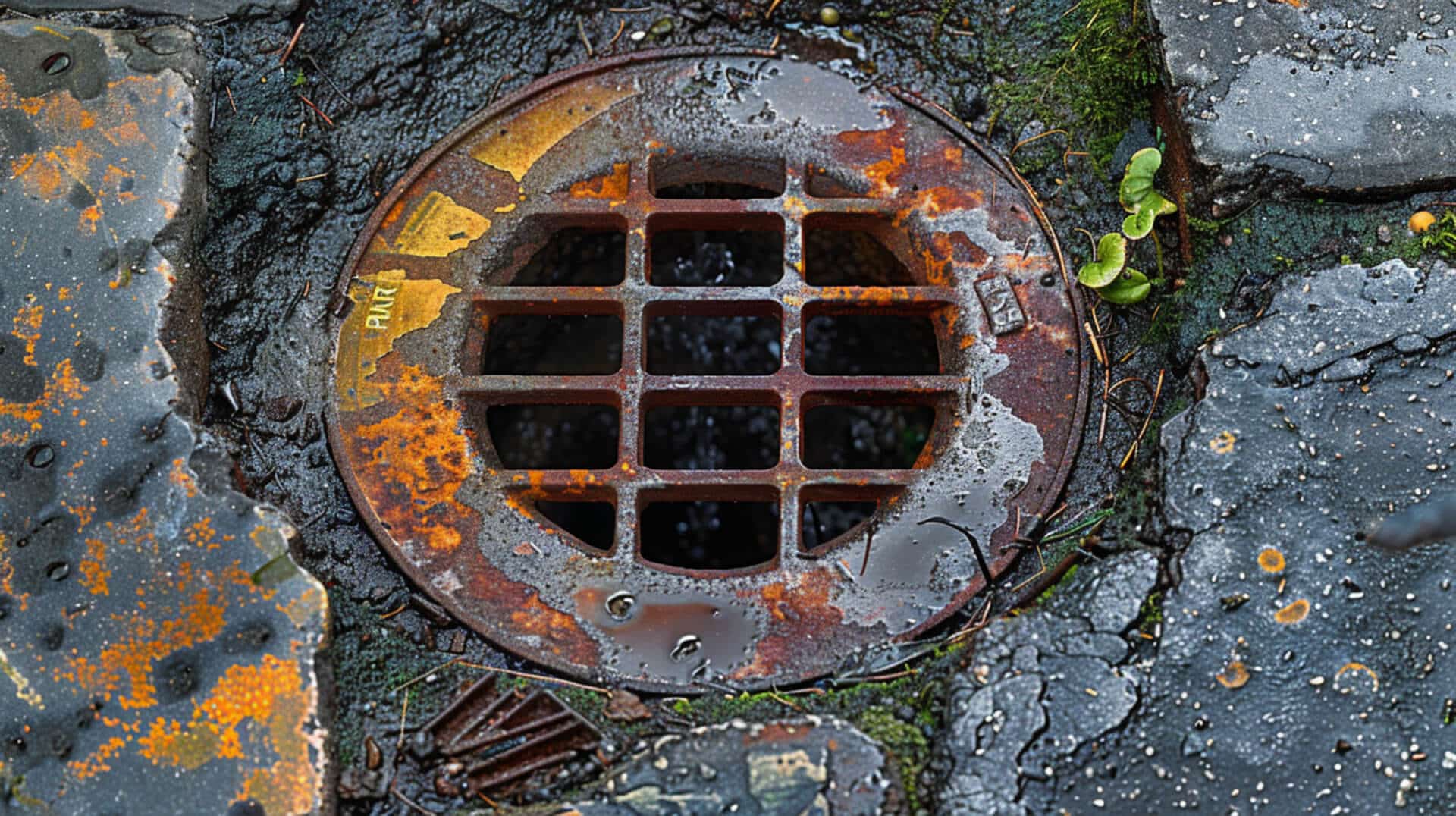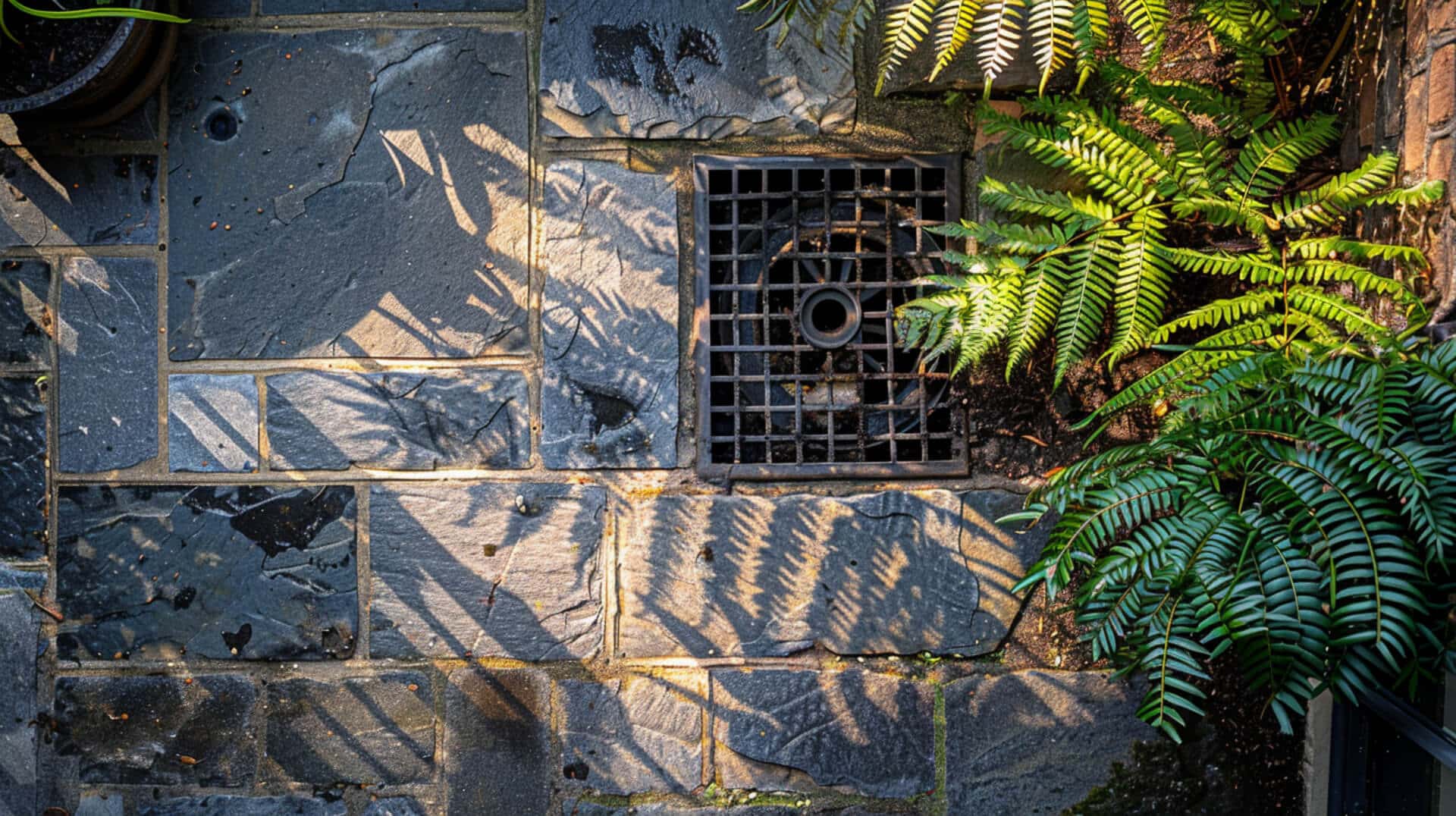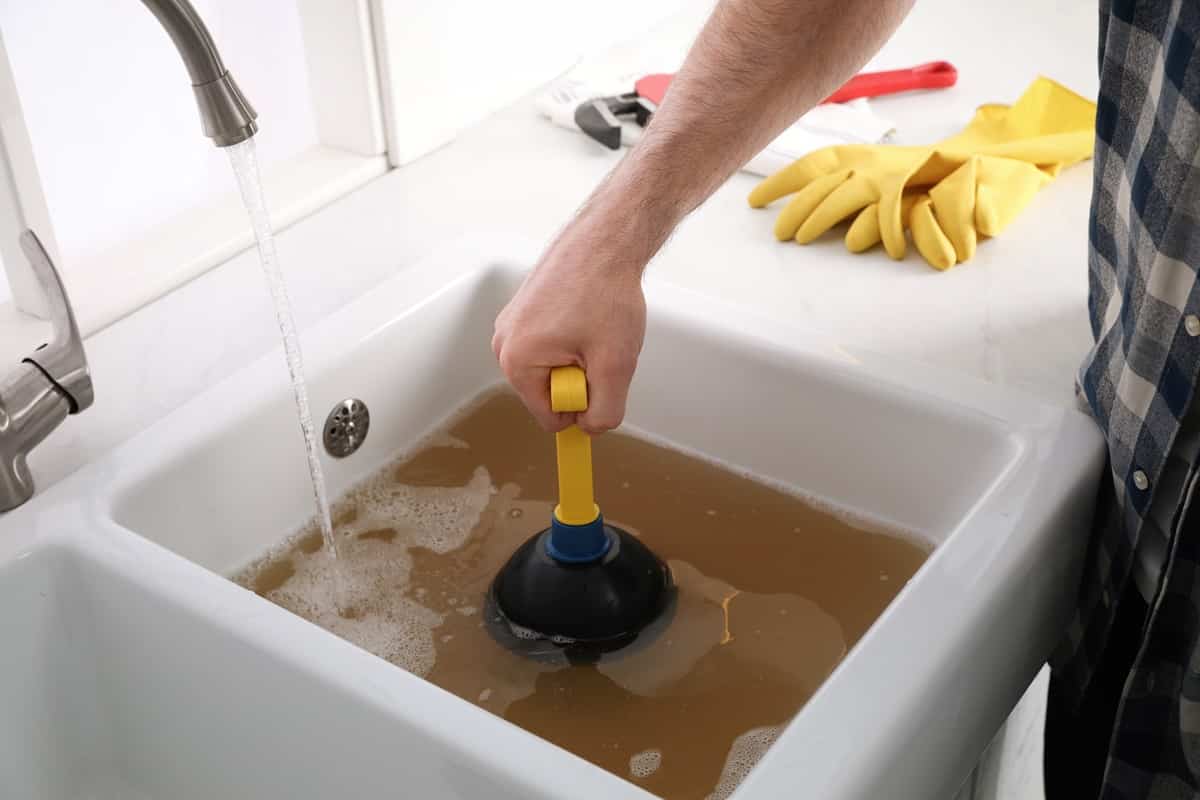 Is Cat Litter Clogging Your Drains?
Is Cat Litter Clogging Your Drains?
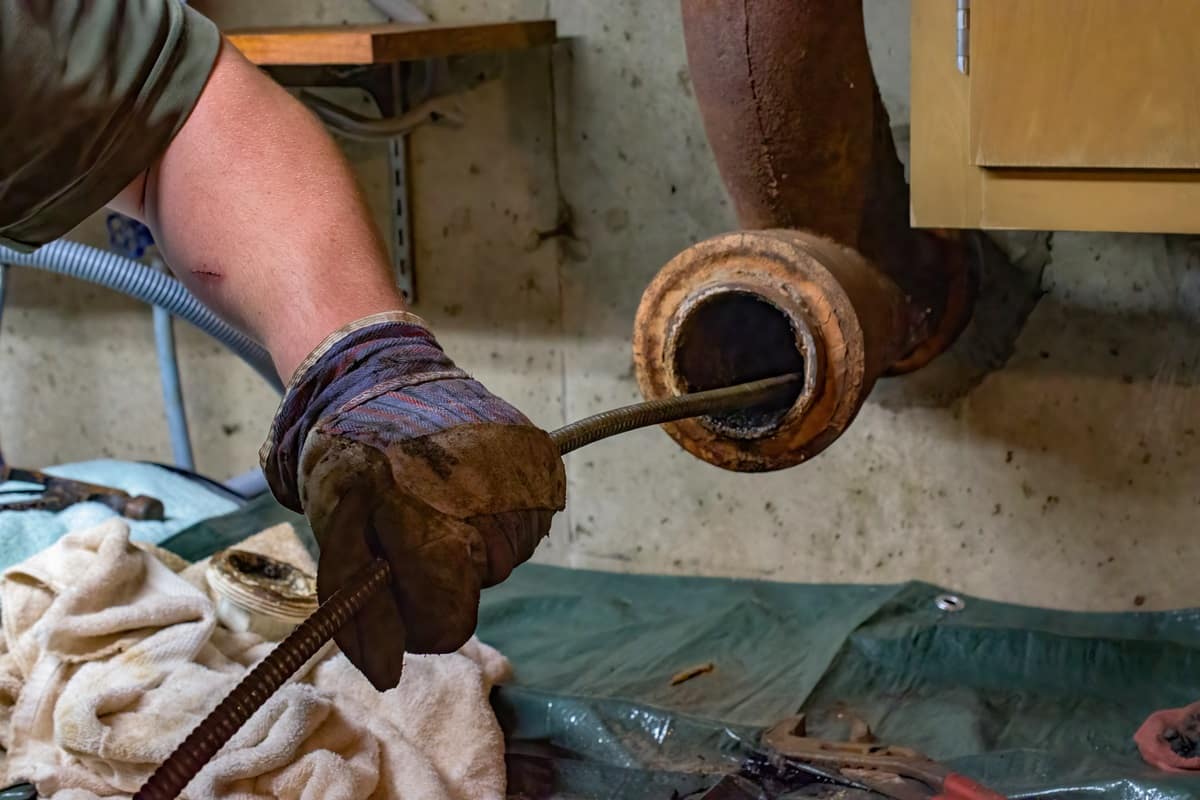
Blocked Drains and Cat Litter
Blocked drains are a common issue faced by many property owners, business owners, and facility managers. Understanding the causes of these blockages is essential for effective prevention and management.
Common Causes of Blocked Drains
Blocked drains can result from various factors, including:
- Hair: Accumulates in shower drains, trapping other debris.
- Soap Scum: Forms a residue that builds up over time.
- Food Waste: Commonly clogs kitchen sinks.
- Fat, Oil, and Grease (FOG): Solidifies in pipes, causing blockages.
- Small Solid Objects: Items like toys or jewellery can accidentally fall into drains.
- Diapers and Wipes: Non-biodegradable materials that cause severe clogs.
- Tree Roots: Invade underground pipes, leading to significant damage.
- Plants and Leaves: Decompose and create slimy blockages.
- Offset Pipes: Misaligned pipes that trap debris.
How Cat Litter Contributes to Drain Blockages
Cat litter is a significant contributor to blocked drains, particularly when it is improperly disposed of by flushing it down toilets or sinks. The physical properties of cat litter, such as its ability to clump and expand when wet, make it especially problematic for plumbing systems.
Importance of Addressing Cat Litter Blockages
Addressing cat litter blockages is crucial for several reasons:
- Preventing Damage: Blockages can cause significant damage to plumbing systems, leading to costly repairs.
- Maintaining Hygiene: Blocked drains can result in unpleasant odours and unsanitary conditions.
- Environmental Impact: Improper disposal of cat litter can harm the environment, affecting marine life and wastewater treatment processes.
What This Guide Will Cover
This guide will provide comprehensive information on the following topics:
- How Cat Litter Causes Blocked Drains: Detailed explanation of the mechanisms behind cat litter blockages.
- Types of Cat Litter and Their Impact on Drains: Analysis of different cat litter types and their effects on plumbing.
- Immediate Steps to Take When Cat Litter Clogs a Drain: Practical advice for addressing blockages.
- Preventive Measures to Avoid Cat Litter Blockages: Tips for proper disposal and maintenance.
- Professional Services for Unclogging Drains: Overview of professional tools and techniques.
- Environmental and Health Impacts of Flushing Cat Litter: Examination of the broader consequences.
- Innovative Cat Litter Solutions: Introduction to eco-friendly and advanced litter options.
- Challenges in Managing Cat Litter Disposal: Discussion of common challenges and solutions.
- Practical Examples and Real-World Applications: Case studies and lessons learned.
- Linking Theory with Practice in Drain Management: Integration of theoretical concepts with practical steps.
By understanding these aspects, you can effectively manage and prevent cat litter-related drain blockages.
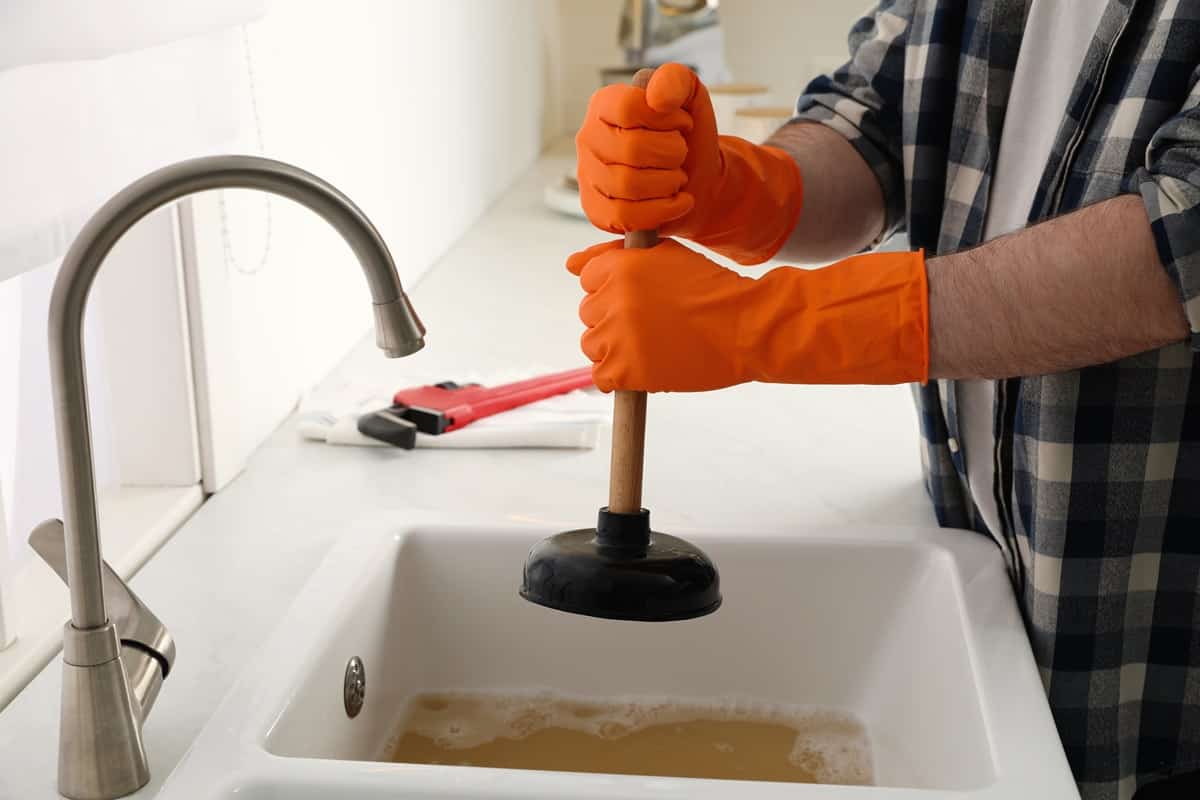
How Cat Litter Causes Blocked Drains
Cat litter is a common cause of blocked drains, particularly in households with pets. Understanding how different types of cat litter contribute to blockages can help in preventing and addressing these issues.
Types of Cat Litter Most Problematic
Certain types of cat litter are more likely to cause blockages in plumbing systems. These include:
- Clumping Litter: This type of litter forms solid clumps when it comes into contact with moisture. These clumps can easily get stuck in pipes, leading to blockages.
- Non-Flushable Litter: Many cat litters are not designed to be flushed down the toilet. When flushed, they can cause significant blockages.
- Flushable Litter: Despite being labelled as flushable, these litters can still expand and cause blockages in plumbing systems.
Expansion and Blockages
Cat litter, especially clumping varieties, expands when it absorbs moisture. This expansion can cause the litter to become lodged in pipes, creating a blockage. The physical properties of cat litter, such as its ability to absorb large amounts of liquid and form solid masses, make it particularly troublesome for plumbing systems.
Physical Properties Leading to Clogs
The physical properties of cat litter that contribute to blockages include:
- Absorbency: Cat litter is designed to absorb moisture, which can lead to expansion and solidification within pipes.
- Clumping Agents: These agents cause the litter to form hard clumps, which can obstruct water flow in drains.
- Non-Biodegradable Materials: Many cat litters are made from materials that do not break down easily, leading to persistent blockages.
Troublesome Nature for Plumbing Systems
Cat litter is particularly problematic for plumbing systems due to its ability to expand and solidify. When flushed or washed down drains, it can create significant blockages that are difficult to remove. This can lead to costly repairs and potential damage to the plumbing infrastructure.
Understanding the types of cat litter and their properties can help in taking preventive measures to avoid blocked drains. Proper disposal methods and regular maintenance are essential in managing the impact of cat litter on plumbing systems.
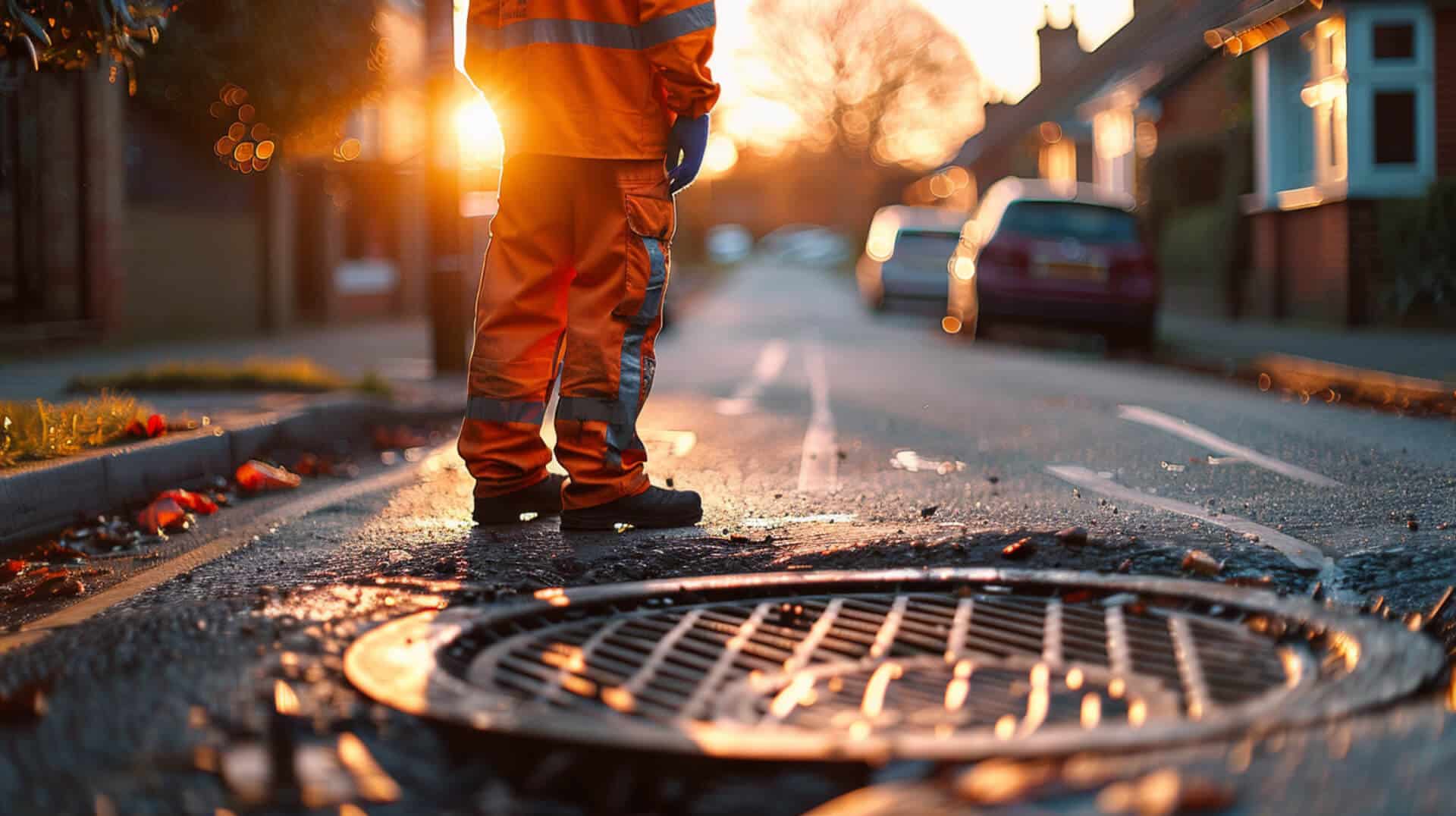
Types of Cat Litter and Their Impact on Drains
Understanding the different types of cat litter and their impact on drains is crucial for preventing blockages. Each type of cat litter has unique properties that affect plumbing systems differently.
Different Types of Cat Litter
Cat litter comes in various forms, each with distinct characteristics:
- Clumping Litter: Forms solid clumps when it absorbs moisture.
- Non-Clumping Litter: Absorbs moisture but does not form clumps.
- Flushable Litter: Marketed as safe to flush, but can still cause blockages.
- Biodegradable Litter: Made from natural materials like wood, corn, or paper.
Impact of Clumping and Non-Clumping Litters on Drains
Clumping and non-clumping litters affect drains in different ways:
- Clumping Litter: The clumping agents cause the litter to form hard masses that can easily obstruct pipes. These clumps are difficult to break down and can lead to severe blockages.
- Non-Clumping Litter: While it does not form solid masses, non-clumping litter can still accumulate in pipes, leading to gradual blockages over time.
Environmental Impacts of Various Cat Litters
The environmental impact of cat litter varies based on its composition:
- Clay-Based Litters: Often non-biodegradable and can contribute to landfill waste.
- Biodegradable Litters: Made from renewable resources and break down more easily, reducing environmental impact.
- Flushable Litters: Despite being marketed as eco-friendly, they can harm marine life and disrupt wastewater treatment processes.
Types of Cat Litter Less Likely to Cause Blockages
Certain types of cat litter are less likely to cause blockages:
- Biodegradable Litter: These litters break down more easily and are less likely to cause persistent blockages.
- Non-Clumping Litter: While still a potential issue, it does not form the hard masses that clumping litter does.
By understanding the properties and impacts of different types of cat litter, you can make informed choices to prevent drain blockages and reduce environmental harm. Proper disposal methods and regular maintenance are essential in managing the impact of cat litter on plumbing systems.
Immediate Steps to Take When Cat Litter Clogs a Drain
When cat litter clogs a drain, taking immediate and appropriate action is crucial to prevent further damage and restore proper drainage.
Initial Actions
If you suspect a cat litter clog, start by:
- Stopping Water Flow: Avoid running water to prevent the clog from worsening.
- Removing Visible Litter: Use gloves to manually remove any visible cat litter from the drain opening.
Effectiveness of DIY Methods
Several do-it-yourself methods can be effective in addressing cat litter clogs:
- Plunging: Creates suction to dislodge the clog. This method is often effective for minor blockages.
- Plumbing Snake: A flexible tool that can reach deeper into the drain to break up and remove clogs. This method is suitable for more stubborn blockages.
Consideration of Chemical Drain Cleaners
Chemical drain cleaners can be used, but with caution:
- Effectiveness: These cleaners can dissolve organic material but may not be effective on cat litter, especially clumping types.
- Potential Damage: Chemicals can damage pipes, especially if used frequently or in large quantities. They can also pose environmental hazards.
Signs That Professional Help Is Needed
Professional intervention may be necessary if:
- Persistent Clogs: DIY methods fail to clear the blockage.
- Slow Draining: Water drains slowly even after attempting to clear the clog.
- Recurring Issues: The problem recurs frequently, indicating a more serious underlying issue.
- Unpleasant Odours: Persistent foul smells emanate from the drain, suggesting a deeper blockage or buildup.
By following these steps and knowing when to seek professional help, you can effectively manage and resolve cat litter-related drain blockages. Proper disposal and preventive measures are essential to avoid future issues.
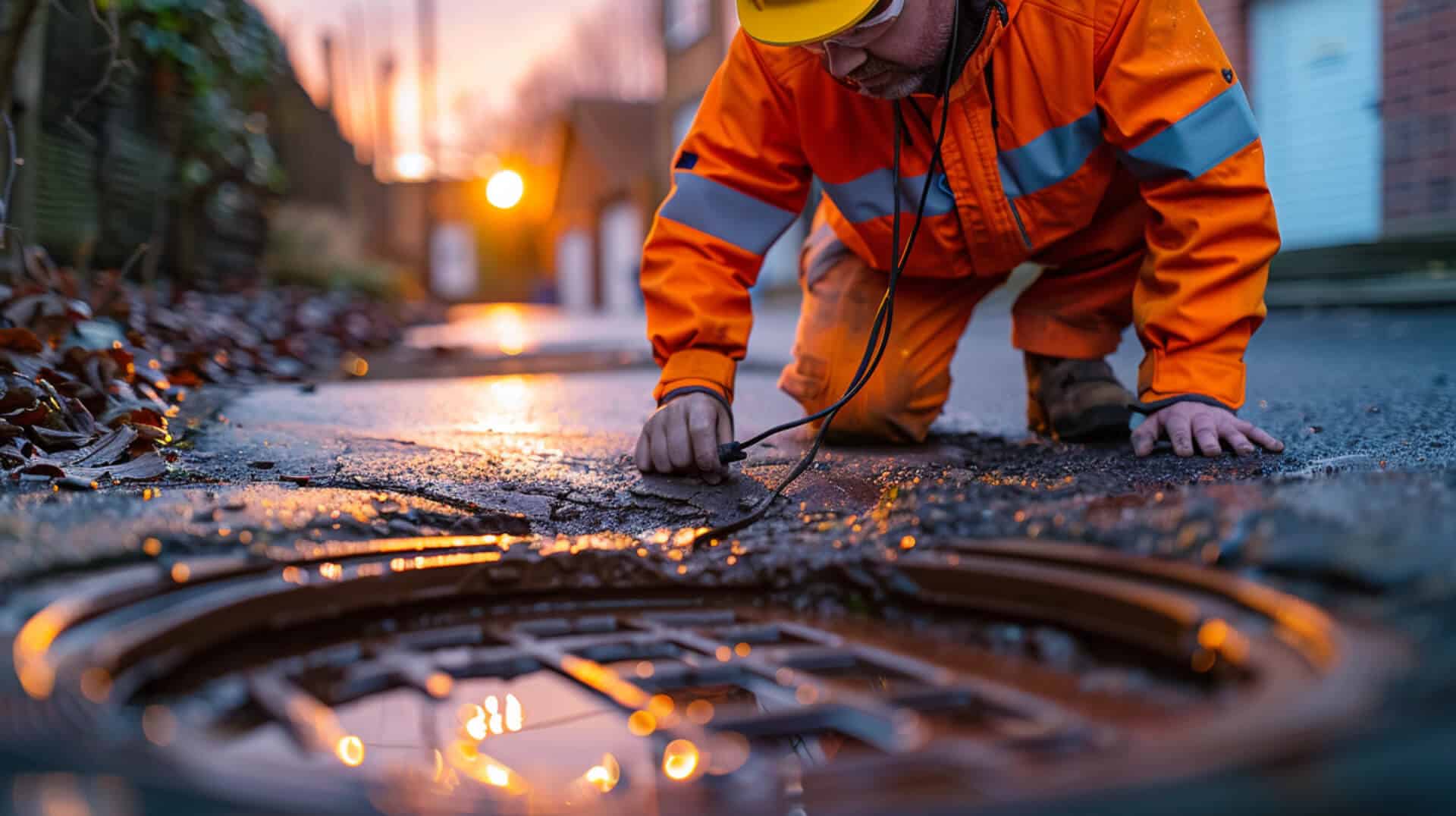
Preventive Measures to Avoid Cat Litter Blockages
Preventing cat litter from causing drain blockages involves proper disposal methods, regular maintenance, and educating those who handle cat litter. Implementing these measures can help maintain a clear and functional plumbing system.
Proper Disposal of Cat Litter
To prevent clogs, cat litter should be disposed of correctly:
- Bagging: Place used cat litter in a sealed bag before disposing of it in the trash. This prevents it from entering the plumbing system.
- Avoid Flushing: Do not flush cat litter down the toilet, even if it is labelled as flushable. Flushing can lead to blockages and damage to the plumbing system.
Benefits of Using Drain Covers
Drain covers are an effective preventive measure:
- Debris Prevention: Drain covers prevent cat litter and other debris from entering the drain, reducing the risk of blockages.
- Easy Maintenance: They are easy to instal and clean, making them a convenient solution for maintaining clear drains.
Regular Drain Maintenance
Regular maintenance is essential for preventing blockages:
- Periodic Cleaning: Clean drains periodically to remove any buildup of debris, including cat litter particles.
- Inspection: Regularly inspect drains for signs of slow drainage or minor blockages and address them promptly.
Educational Measures for Tenants or Employees
Educating those who handle cat litter can prevent improper disposal:
- Informational Materials: Provide informational materials on proper cat litter disposal methods.
- Training Sessions: Conduct training sessions for tenants or employees to ensure they understand the importance of proper disposal and the potential consequences of improper practices.
By following these preventive measures, you can significantly reduce the risk of cat litter causing drain blockages, ensuring a more efficient and trouble-free plumbing system.
Professional Services for Unclogging Drains
When cat litter causes severe blockages, professional services may be necessary to restore proper drainage. Professionals use specialised tools and techniques to effectively clear these blockages.
Tools and Techniques Used by Professionals
Professionals employ various tools and techniques to address cat litter blockages:
- Plumbing Snake: A flexible tool that reaches deep into the drain to break up and remove clogs.
- Auger: Similar to a plumbing snake but designed for more stubborn blockages.
- High-Pressure Jetting: Uses high-pressure water to clear blockages and clean the inside of pipes.
- Video Inspection: A camera is used to inspect the inside of pipes and identify the exact location and nature of the blockage.
High-Pressure Jetting for Stubborn Clogs
High-pressure jetting is an effective method for clearing stubborn clogs:
- Mechanism: High-pressure water is directed into the pipes to break up and flush out blockages.
- Effectiveness: This method is highly effective for removing clumps of cat litter and other debris that are difficult to dislodge with traditional tools.
- Advantages: It cleans the entire pipe, preventing future blockages and improving water flow.
Advantages of Video Inspection of Drains
Video inspection offers several benefits:
- Accurate Diagnosis: Allows professionals to see inside the pipes and accurately diagnose the cause and location of the blockage.
- Preventive Maintenance: Identifies potential issues before they become severe, allowing for timely intervention.
- Cost-Effective: Reduces the need for exploratory digging or pipe removal, saving time and money.
When Pipe Relining Is Necessary
Pipe relining is a method used to repair damaged pipes without excavation:
- Indications: Necessary when pipes are damaged or severely blocked and traditional methods are ineffective.
- Process: A resin-coated liner is inserted into the damaged pipe and inflated, creating a new pipe within the old one.
- Benefits: Minimally invasive, cost-effective, and extends the lifespan of the plumbing system.
By utilising these professional services, you can effectively address and prevent cat litter-related drain blockages, ensuring a functional and efficient plumbing system.
Environmental and Health Impacts of Flushing Cat Litter
Flushing cat litter down the toilet can have significant environmental and health impacts. Understanding these consequences is essential for proper disposal and maintaining a healthy environment.
Environmental Consequences of Flushing Cat Litter
Flushing cat litter can lead to several environmental issues:
- Marine Life Impact: Cat litter, especially clumping types, can expand and cause blockages in sewer systems, leading to untreated sewage being released into water bodies. This can harm marine life.
- Wastewater Treatment Disruption: Cat litter can interfere with the processes at wastewater treatment plants, reducing their efficiency and leading to environmental contamination.
Effects on Municipal Sewer Systems and Wastewater Treatment Plants
Cat litter can cause significant problems for municipal sewer systems and wastewater treatment plants:
- Blockages: The clumping nature of cat litter can cause severe blockages in sewer pipes, leading to backups and overflows.
- Treatment Interference: Cat litter can disrupt the biological processes used in wastewater treatment, making it harder to treat sewage effectively.
Health Risks Associated with Pathogens in Cat Litter
Cat litter can harbour pathogens that pose health risks:
- Toxoplasma Gondii: This parasite, commonly found in cat faeces, can cause toxoplasmosis, a disease that is particularly dangerous for pregnant women and individuals with weakened immune systems.
- Bacterial Contamination: Improper disposal of cat litter can lead to bacterial contamination of water sources, posing health risks to humans and animals.
Mitigating Risks Through Proper Disposal Methods
Proper disposal methods can mitigate these risks:
- Bagging and Trash Disposal: Place used cat litter in a sealed bag and dispose of it in the trash. This prevents it from entering the plumbing system and causing blockages.
- Avoid Flushing: Do not flush cat litter down the toilet, even if it is labelled as flushable. This reduces the risk of blockages and environmental contamination.
- Education and Awareness: Educate tenants, employees, and household members about the proper disposal methods for cat litter to prevent improper practices.
By understanding and addressing the environmental and health impacts of flushing cat litter, you can contribute to a healthier environment and reduce the risk of plumbing issues. Proper disposal methods are essential for maintaining a functional and safe plumbing system.
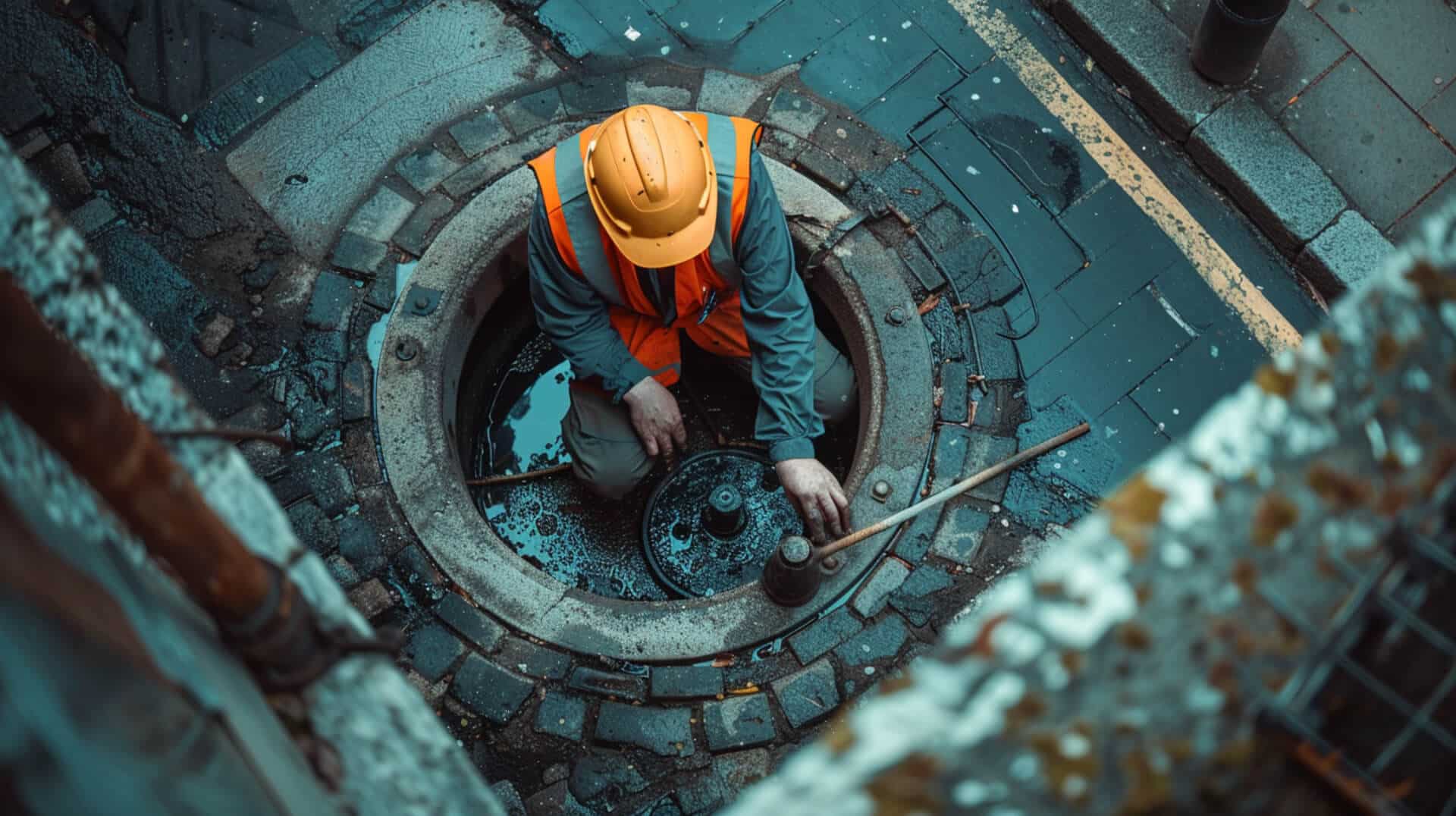
Innovative Cat Litter Solutions
Innovative cat litter solutions can help prevent drain blockages and reduce environmental impact. These solutions include eco-friendly cat litter options, self-cleaning litter boxes, and advanced litter disposal systems.
Eco-Friendly Cat Litter Options
Eco-friendly cat litter options are designed to minimise environmental impact:
- Biodegradable Litter: Made from natural materials like wood, corn, or recycled paper, biodegradable litter breaks down more easily and is less likely to cause blockages.
- Non-Clumping Litter: While not as convenient as clumping litter, non-clumping options are less likely to form solid masses that can obstruct pipes.
Self-Cleaning Litter Boxes
Self-cleaning litter boxes offer several benefits in preventing drain blockages:
- Automatic Waste Removal: These litter boxes automatically remove waste, reducing the need for manual scooping and minimising the risk of litter entering the plumbing system.
- Hygienic Disposal: Waste is collected in a sealed container, which can be easily disposed of in the trash, preventing it from being flushed down the toilet.
Benefits of Litter Disposal Systems
Litter disposal systems provide a convenient and hygienic way to manage cat litter:
- Sealed Containers: These systems use sealed containers to store used litter, preventing odours and reducing the risk of blockages.
- Easy Disposal: The sealed containers can be easily removed and disposed of in the trash, ensuring that litter does not enter the plumbing system.
Cost and Effectiveness Comparison
Comparing the cost and effectiveness of these solutions can help in making an informed decision:
- Biodegradable Litter: Generally more expensive than traditional clay-based litter but offers environmental benefits and reduces the risk of blockages.
- Self-Cleaning Litter Boxes: Higher initial cost but provides convenience and reduces manual handling of litter.
- Litter Disposal Systems: Moderate cost with significant benefits in terms of hygiene and ease of disposal.
By considering these innovative cat litter solutions, you can effectively manage cat litter disposal, prevent drain blockages, and reduce environmental impact. Proper disposal methods and regular maintenance are essential for maintaining a functional plumbing system.
Challenges in Managing Cat Litter Disposal
Managing cat litter disposal presents several challenges for property owners and facility managers. Addressing these challenges effectively requires understanding the common issues and implementing best practices.
Common Challenges Faced by Property Owners and Facility Managers
Property owners and facility managers often encounter the following challenges:
- Improper Disposal: Tenants or employees may flush cat litter down toilets, leading to blockages.
- Lack of Awareness: Many individuals are unaware of the proper disposal methods for cat litter.
- Maintenance Issues: Regular maintenance is required to prevent blockages, which can be time-consuming and costly.
Navigating These Challenges Effectively
To navigate these challenges, consider the following strategies:
- Education and Training: Provide clear instructions and training on proper cat litter disposal methods to tenants and employees.
- Regular Inspections: Conduct regular inspections of plumbing systems to identify and address potential issues before they become severe.
- Use of Drain Covers: Instal drain covers to prevent cat litter and other debris from entering the plumbing system.
Role of Regulations and Guidelines in Cat Litter Disposal
Regulations and guidelines play a crucial role in managing cat litter disposal:
- Municipal Guidelines: Many municipalities have specific guidelines for disposing of cat litter. Adhering to these guidelines can prevent blockages and environmental harm.
- Environmental Regulations: Regulations regarding the disposal of waste materials, including cat litter, help protect the environment and public health.
Implementing Best Practices for Litter Management
Organisations can implement best practices for litter management by:
- Providing Disposal Stations: Set up designated disposal stations with clear instructions for proper cat litter disposal.
- Promoting Eco-Friendly Options: Encourage the use of biodegradable cat litter to reduce environmental impact.
- Regular Maintenance Schedules: Establish regular maintenance schedules to ensure that plumbing systems remain clear and functional.
By understanding and addressing these challenges, property owners and facility managers can effectively manage cat litter disposal, ensuring a functional plumbing system and a healthier environment.
Practical Examples and Real-World Applications
Understanding real-world examples of cat litter causing drain blockages can provide valuable insights into managing and preventing these issues. Property owners have successfully navigated these challenges through various strategies.
Real-World Examples of Cat Litter Causing Drain Blockages
Several instances highlight the impact of cat litter on plumbing systems:
- Residential Blockages: Homeowners often report clogs in toilets and sinks due to the improper disposal of clumping cat litter.
- Apartment Complexes: Property managers in multi-unit buildings face frequent blockages in shared plumbing systems caused by tenants flushing cat litter.
- Commercial Properties: Businesses with on-site pets, such as pet stores or veterinary clinics, encounter similar issues with cat litter clogging drains.
Successful Management by Property Owners
Property owners have implemented effective measures to address and prevent cat litter blockages:
- Educational Campaigns: Providing tenants and employees with information on proper cat litter disposal methods has significantly reduced incidents of blockages.
- Regular Maintenance: Scheduling routine inspections and cleanings of plumbing systems helps identify and address potential issues before they become severe.
- Use of Drain Covers: Installing drain covers in sinks and bathtubs prevents cat litter from entering the plumbing system.
Lessons Learned from These Examples
Several key lessons can be drawn from these real-world examples:
- Importance of Education: Informing individuals about the proper disposal of cat litter is crucial in preventing blockages.
- Proactive Maintenance: Regular maintenance and inspections are essential in managing plumbing systems effectively.
- Preventive Measures: Simple solutions like drain covers can significantly reduce the risk of blockages.
Applying These Lessons to Prevent Future Blockages
To prevent future blockages, consider the following strategies:
- Implement Educational Programmes: Develop and distribute materials that educate tenants and employees on proper cat litter disposal.
- Schedule Regular Maintenance: Establish a routine maintenance schedule to keep plumbing systems clear and functional.
- Instal Preventive Devices: Use drain covers and other preventive devices to stop cat litter from entering the plumbing system.
By applying these practical examples and lessons, property owners can effectively manage and prevent cat litter-related drain blockages, ensuring a functional and efficient plumbing system.
Linking Theory with Practice in Drain Management
Understanding the theoretical concepts of plumbing and waste management is essential for effectively addressing cat litter blockages. Applying these theories in practical ways can help property owners maintain clear and functional plumbing systems.
Theoretical Concepts of Plumbing and Waste Management
Several key theoretical concepts are relevant to managing cat litter blockages:
- Hydraulics: The study of fluid flow in pipes, which helps in understanding how blockages form and how to prevent them.
- Waste Management: Principles of waste segregation and disposal, which are crucial for preventing non-biodegradable materials like cat litter from entering the plumbing system.
- Environmental Impact: Understanding the environmental consequences of improper waste disposal, including the effects on municipal sewer systems and wastewater treatment plants.
Practical Steps Based on Theoretical Concepts
Property owners can take several practical steps based on these theoretical concepts:
- Proper Disposal: Ensure that cat litter is disposed of in the trash rather than flushed down the toilet. This prevents blockages and reduces environmental impact.
- Regular Maintenance: Schedule routine inspections and cleanings of plumbing systems to identify and address potential issues before they become severe.
- Use of Preventive Devices: Instal drain covers to prevent cat litter and other debris from entering the plumbing system.
Integrating Practices into Maintenance Routines
Integrating these practices into regular maintenance routines can help property owners manage their plumbing systems more effectively:
- Maintenance Schedules: Establish and adhere to a regular maintenance schedule that includes inspections, cleanings, and preventive measures.
- Educational Programmes: Provide tenants and employees with information on proper cat litter disposal methods to prevent improper practices.
- Monitoring and Reporting: Implement a system for monitoring plumbing issues and reporting blockages promptly to ensure timely intervention.
Long-Term Benefits of Applying These Concepts
Applying these theoretical concepts and practical steps offers several long-term benefits:
- Reduced Blockages: Proper disposal and regular maintenance reduce the frequency and severity of blockages.
- Cost Savings: Preventive measures and timely interventions can save on costly repairs and replacements.
- Environmental Protection: Proper waste management practices help protect the environment and ensure compliance with regulations.
By linking theory with practice, property owners can effectively manage cat litter disposal and maintain a functional plumbing system.
Key Takeaways from This Guide
Understanding the common causes of blocked drains due to cat litter is essential for effective management and prevention. Key points include:
- Types of Cat Litter: Clumping, non-clumping, flushable, and biodegradable litters each have different impacts on plumbing systems.
- Immediate Actions: Steps to take when a blockage occurs, including DIY methods and when to seek professional help.
- Preventive Measures: Proper disposal methods, use of drain covers, and regular maintenance to prevent blockages.
- Environmental and Health Impacts: The consequences of improper disposal on the environment and public health.
- Innovative Solutions: Eco-friendly litter options, self-cleaning litter boxes, and advanced disposal systems.
Implementing Strategies for Property Owners, Business Owners, and Facility Managers
To effectively implement these strategies, consider the following:
Educational Programmes
- Informational Materials: Distribute materials that explain proper cat litter disposal methods.
- Training Sessions: Conduct sessions to educate tenants and employees on the importance of proper disposal.
Regular Maintenance
- Scheduled Inspections: Establish a routine for inspecting and cleaning plumbing systems.
- Preventive Measures: Use drain covers and other devices to prevent litter from entering the plumbing system.
Professional Services
- Engage Experts: Utilise professional services for severe blockages and regular maintenance.
- Advanced Techniques: Employ high-pressure jetting, video inspections, and pipe relining as needed.
Next Steps for Addressing Cat Litter-Related Drain Blockages
To address cat litter-related drain blockages, follow these steps:
- Immediate Action: Use plunging or a plumbing snake for minor blockages.
- Professional Help: Seek professional services for persistent or severe blockages.
- Preventive Measures: Implement proper disposal methods and regular maintenance routines.
Ongoing Education and Awareness
Continuous education and awareness are crucial for preventing future issues:
- Regular Updates: Provide ongoing updates and reminders about proper disposal practices.
- Community Involvement: Engage the community in educational initiatives to promote awareness and proper practices.
By following these strategies, property owners, business owners, and facility managers can effectively manage and prevent cat litter-related drain blockages, ensuring a functional and efficient plumbing system.
